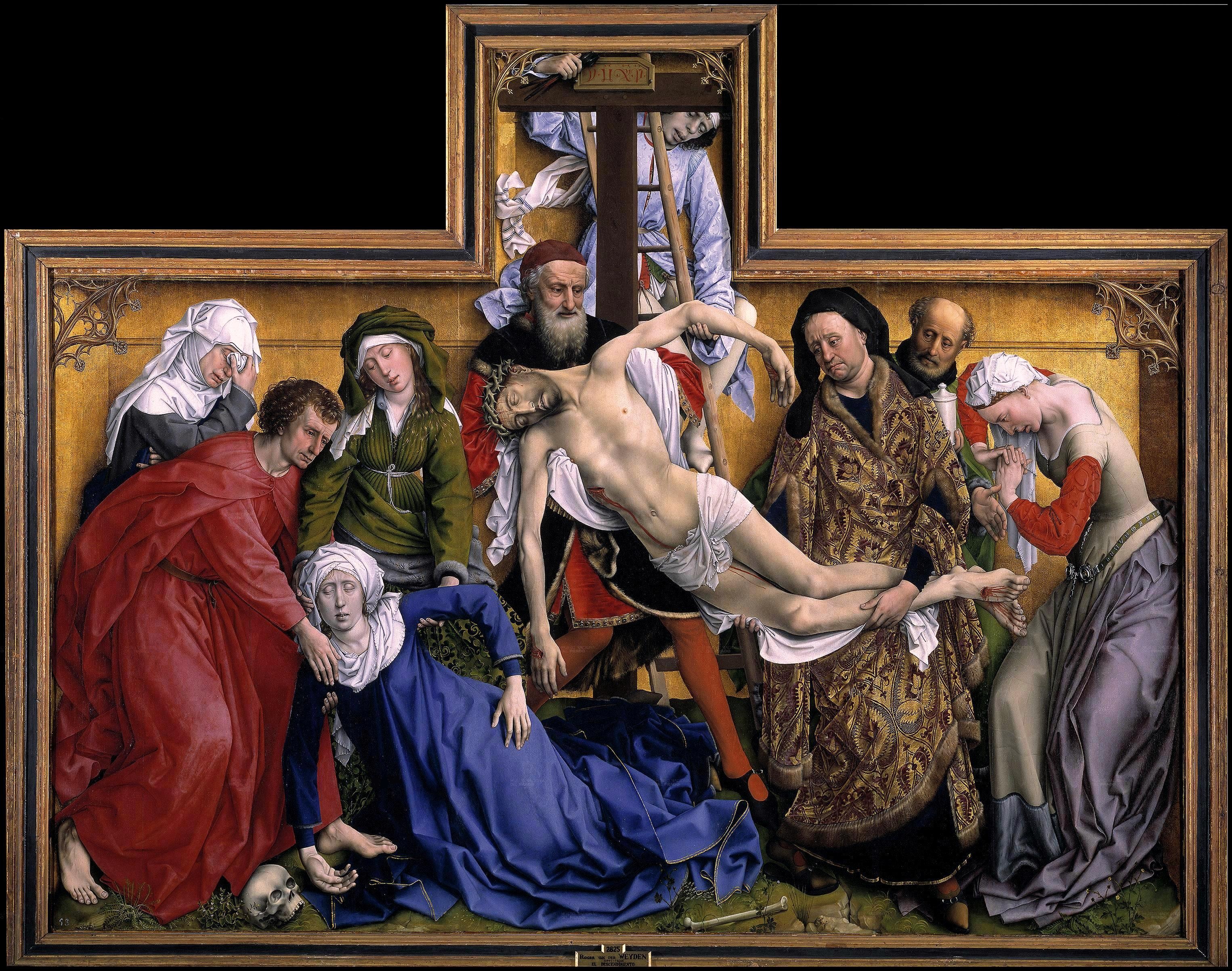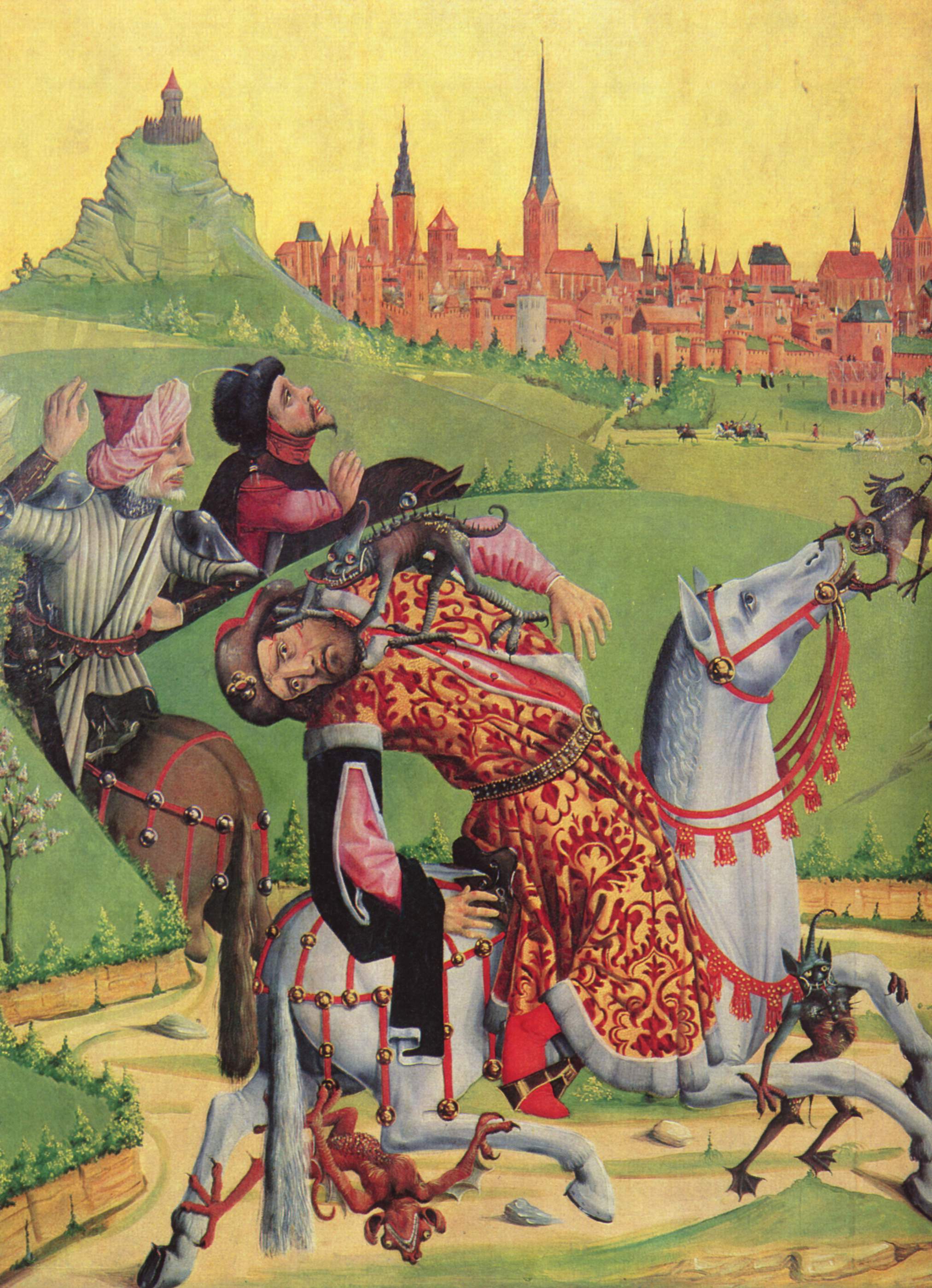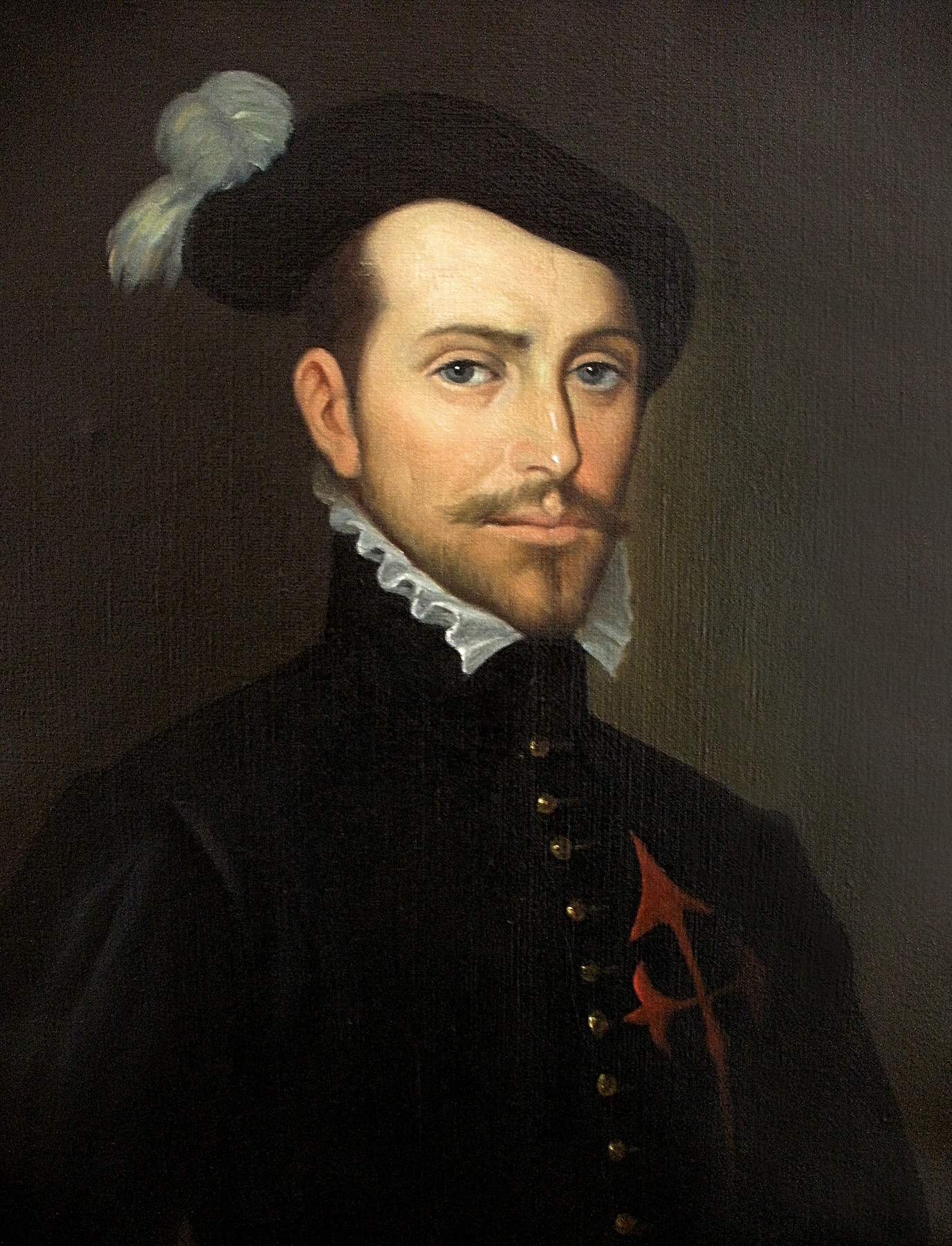|
Hinrik Funhof
Hinrik Funhof (died 1485, also spelled Henrik Funhof) was a late Gothic painter who lived and worked in Hamburg. After the death of his colleague Hans Bornemann in 1475, he took over Bornemann's studio and married his widow. When Funhof died ten years later, she remarried to another Hamburg painter, Absolon Stumme. Works Only a few of his works survive, namely: *''The Virgin Mary with Headdress'' (ca. 1480, DE: ''Maria mit Ährenkleid''), in the collection of the Hamburger Kunsthalle *''The Marriage at Cana'' (ca. 1481, DE: ''Hochzeit zu Kana'', in a private collection. *The outer sides of the wings of the 1482 Altarpiece in St. John's Church, Lüneburg See also * List of German painters References * Dörte Zbikowski: Zum Beispiel: Hinrik Funhof, in: Die Kunst des Mittelalters in Hamburg. Aufsätze zur Kulturgeschichte. Stiftung Denkmalpflege. Hamburg. * * Gmelin, Hans Georg"Funhof, Hinrik."In Grove Art Online. Oxford Art Online, (accessed 3 February 2012; subscript ... [...More Info...] [...Related Items...] OR: [Wikipedia] [Google] [Baidu] |
Hamburger Kunsthalle
The Hamburger Kunsthalle is the art museum of the Free and Hanseatic City of Hamburg, Germany. It is one of the largest art museums in the country. The museum consists of three connected buildings, dating from 1869 (main building), 1921 (Kuppelsaal) and 1997 (Galerie der Gegenwart), located in the Altstadt district between the Hauptbahnhof (central train station) and the two Alster lakes. The name ''Kunsthalle'' indicates the museum's history as an 'art hall' when it was founded in 1850. Today, the museum houses one of the few art collections in Germany that cover seven centuries of European art, from the Middle Ages to the present day. The Kunsthalle's permanent collections focus on North German painting of the 14th century, paintings by Dutch, Flemish and Italian artists of the 16th and 17th centuries, French and German drawings and paintings of the 19th century, and international modern and contemporary art. History The museum collection traces its origin to 1849, when it ... [...More Info...] [...Related Items...] OR: [Wikipedia] [Google] [Baidu] |
Late Gothic Painting
Early Netherlandish painting, traditionally known as the Flemish Primitives, refers to the work of artists active in the Burgundian and Habsburg Netherlands during the 15th- and 16th-century Northern Renaissance period. It flourished especially in the cities of Bruges, Ghent, Mechelen, Leuven, Tournai and Brussels, all in present-day Belgium. The period begins approximately with Robert Campin and Jan van Eyck in the 1420s and lasts at least until the death of Gerard David in 1523,Spronk (1996), 7 although many scholars extend it to the start of the Dutch Revolt in 1566 or 1568–Max J. Friedländer's acclaimed surveys run through Pieter Bruegel the Elder. Early Netherlandish painting coincides with the Early and High Italian Renaissance, but the early period (until about 1500) is seen as an independent artistic evolution, separate from the Renaissance humanism that characterised developments in Italy. Beginning in the 1490s, as increasing numbers of Netherlandish and other North ... [...More Info...] [...Related Items...] OR: [Wikipedia] [Google] [Baidu] |
Hamburg
(male), (female) en, Hamburger(s), Hamburgian(s) , timezone1 = Central (CET) , utc_offset1 = +1 , timezone1_DST = Central (CEST) , utc_offset1_DST = +2 , postal_code_type = Postal code(s) , postal_code = 20001–21149, 22001–22769 , area_code_type = Area code(s) , area_code = 040 , registration_plate = , blank_name_sec1 = GRP (nominal) , blank_info_sec1 = €123 billion (2019) , blank1_name_sec1 = GRP per capita , blank1_info_sec1 = €67,000 (2019) , blank1_name_sec2 = HDI (2018) , blank1_info_sec2 = 0.976 · 1st of 16 , iso_code = DE-HH , blank_name_sec2 = NUTS Region , blank_info_sec2 = DE6 , website = , footnotes ... [...More Info...] [...Related Items...] OR: [Wikipedia] [Google] [Baidu] |
Hans Bornemann
Hans Bornemann (active from 1448 - d. 1474) was a late Gothic painter who was active in Hamburg. The earliest written mention of him is a record that he received an inheritance in 1448. He was one of the founders of the Guild of Saint Luke in Hamburg. He was active in the city council of Hamburg, and painted 17 portraits of princes for the Hamburg city hall. After his death his workshop was taken over by Hinrik Funhof, who in 1475 also married Bornemann's widow. He was also the father of painter Hinrik Bornemann. Further reading ''This article is a translation of the corresponding article on the German Wikipedia as of 30 January 2009'' * Gmelin, Hans Georg"Bornemann."In Grove Art Online. Oxford Art Online, (accessed February 3, 2012; subscription required). * * Helmut Reinecke, "Der Maler Hans Bornemann", in: ''Zeitschrift des deutschen Vereins für Kunstwissenschaft'', Vol. 5, 1938, pp. 204–229 * Hans-Georg Gmelin, "Hans Bornemanns künstlerische Stellung und Nac ... [...More Info...] [...Related Items...] OR: [Wikipedia] [Google] [Baidu] |
Absolon Stumme
Absolon Stumme (died 1499) was a Late Gothic painter from Northern Germany who worked in Hamburg. Absolon Stumme married into the family of artists, becoming the second stepfather of Hinrik Bornemann, who died the same year as he did. After their deaths the Hamburg Cathedral altarpiece, upon which they had been working, was finished by Wilm Dedeke. It is debated by 20th-century art historians which of the two is recorded as the ''Master of the Hamburg cathedral altar''.for the controversy's status in 1950, cf. Thieme-Becker, volume 37, ''Meister mit Notnamen'' Both are also associated with the Master of the Lüneburg foot washing. References *''Goldgrund und Himmelslicht. Mittelalter in Hamburg.'' Exhibit catalog from the Hamburger Kunsthalle, Hamburg 1999. External links * Entry for Absolon Stummeon the Union List of Artist Names The Union List of Artist Names (ULAN) is a free online database of the Getty Research Institute using a controlled vocabulary C ... [...More Info...] [...Related Items...] OR: [Wikipedia] [Google] [Baidu] |
Marriage At Cana
The transformation of water into wine at the wedding at Cana (also called the marriage at Cana, wedding feast at Cana or marriage feast at Cana) is the first miracle attributed to Jesus in the Gospel of John. In the Gospel account, Jesus Christ, his mother and his disciples are invited to a wedding. When his mother notices that the wine has run out, Jesus delivers a sign of his divinity by turning water into wine at her request. The location of Cana has been subject to debate among biblical scholars and archaeologists; several villages in Galilee are possible candidates. The account is taken as evidence of Christ’s approval of marriage and earthly celebrations, and has also been used as an argument against teetotalism. Biblical account John 2:1–11 states that Jesus was at a wedding (''seudat nissuin'') in Cana with his disciples. Jesus' mother (unnamed in the Gospel of John) told Jesus, "They have no wine," and Jesus replied, "Woman, what concern is that to you and to me ... [...More Info...] [...Related Items...] OR: [Wikipedia] [Google] [Baidu] |
Altarpiece
An altarpiece is an artwork such as a painting, sculpture or relief representing a religious subject made for placing at the back of or behind the altar of a Christian church. Though most commonly used for a single work of art such as a painting or sculpture, or a set of them, the word can also be used of the whole ensemble behind an altar, otherwise known as a reredos, including what is often an elaborate frame for the central image or images. Altarpieces were one of the most important products of Christian art especially from the late Middle Ages to the era of the Counter-Reformation. Many altarpieces have been removed from their church settings, and often from their elaborate sculpted frameworks, and are displayed as more simply framed paintings in museums and elsewhere. History Origins and early development Altarpieces seem to have begun to be used during the 11th century, with the possible exception of a few earlier examples. The reasons and forces that led to the developme ... [...More Info...] [...Related Items...] OR: [Wikipedia] [Google] [Baidu] |
List Of German Painters
This is a list of German painters. A > second column was into info box --> * Hans von Aachen (1552–1615) * Aatifi (born 1965) * Karl Abt (1899–1985) * Tomma Abts (born 1967) * Andreas Achenbach (1815–1910) * Oswald Achenbach (1827–1905) * Herbert Achternbusch (1938–2022) * Franz Ackermann (born 1963) * Johann Adam Ackermann (1780–1853) * Max Ackermann (1887–1975) * Otto Ackermann (1872–1953) * Albrecht Adam (1786–1862) * Benno Adam (1812–1892) * Emil Adam (1843–1924) * Eugen Adam (1817–1880) * Franz Adam (1815–1886) * Heinrich Adam (1787–1862) * Luitpold Adam (1888–1950) * Jankel Adler (1895–1949) * Salomon Adler (1630–1709) * Christoph Ludwig Agricola (1667–1719) * Karl Agricola (1779–1852) * August Ahlborn (1796–1857) * Erwin Aichele (1887–1974) * Wolfram Aichele (1924–2016) * Max Ainmiller (1807–1870) * Josef Albers (1888–1976) * Heinrich Jacob Aldenrath (1775–1844) * William Alexander (1915–1997) * Christian Wil ... [...More Info...] [...Related Items...] OR: [Wikipedia] [Google] [Baidu] |
Union List Of Artist Names
The Union List of Artist Names (ULAN) is a free online database of the Getty Research Institute using a controlled vocabulary, which by 2018 contained over 300,000 artists and over 720,000 names for them, as well as other information about artists. Names in ULAN may include given names, pseudonyms, variant spellings, names in multiple languages, and names that have changed over time (e.g., married names). Among these names, one is flagged as the preferred name. Although it is displayed as a list, ULAN is structured as a thesaurus, compliant with ISO and NISO standards for thesaurus construction; it contains hierarchical, equivalence, and associative relationships. The focus of each ULAN record is an artist. In the database, each artist record (also called a subject) is identified by a unique numeric ID. The artist's nationality is given, as are places and dates of birth and death (if known). Linked to each artist record are names, related artists, sources for the data, and notes. ... [...More Info...] [...Related Items...] OR: [Wikipedia] [Google] [Baidu] |
1485 Deaths
Year 1485 ( MCDLXXXV) was a common year starting on Saturday (link will display the full calendar) of the Julian calendar. Events January–December * Spring – Multiple earthquakes occur near Taishan, China. * March 16 – A solar eclipse crosses northern South America and Central Europe. * June 1 – Matthias of Hungary takes Vienna, in his conquest of Austria (from Frederick III), and makes the city his capital. * August 5–August 7 – The first outbreak of sweating sickness in England begins. * August 22 – Battle of Bosworth: King Richard III of England is defeated by (rival claimant to the throne of England) Henry Tudor, Earl of Richmond; Richard dies in battle, and Henry Tudor becomes King Henry VII of England (although Henry marks this battle as August 21, so that he can declare all his opponents traitors). * September 12 – Muscovian forces conquer Tver. * September 15 – Peter Arbues is assaulted while praying in the ca ... [...More Info...] [...Related Items...] OR: [Wikipedia] [Google] [Baidu] |
15th-century German Painters
The 15th century was the century which spans the Julian calendar, Julian dates from 1 January 1401 (Roman numerals, MCDI) to 31 December 1500 (Roman numerals, MD). In History of Europe, Europe, the 15th century includes parts of the Late Middle Ages, the Early Renaissance, and the early modern period. Many technological, social and cultural developments of the 15th century can in retrospect be seen as heralding the "European miracle" of the following centuries. The Perspective (graphical), architectural perspective, and the modern fields which are known today as banking and accounting were founded in Italy. The Hundred Years' War ended with a decisive Kingdom of France, French victory over the Kingdom of England, English in the Battle of Castillon. Financial troubles in England following the conflict resulted in the Wars of the Roses, a series of dynastic wars for the throne of England. The conflicts ended with the defeat of Richard III by Henry VII of England, Henry VII at th ... [...More Info...] [...Related Items...] OR: [Wikipedia] [Google] [Baidu] |
German Male Painters
German(s) may refer to: * Germany (of or related to) **Germania (historical use) * Germans, citizens of Germany, people of German ancestry, or native speakers of the German language ** For citizens of Germany, see also German nationality law **Germanic peoples (Roman times) * German language **any of the Germanic languages * German cuisine, traditional foods of Germany People * German (given name) * German (surname) * Germán, a Spanish name Places * German (parish), Isle of Man * German, Albania, or Gërmej * German, Bulgaria * German, Iran * German, North Macedonia * German, New York, U.S. * Agios Germanos, Greece Other uses * German (mythology), a South Slavic mythological being * Germans (band), a Canadian rock band * "German" (song), a 2019 song by No Money Enterprise * ''The German'', a 2008 short film * "The Germans", an episode of ''Fawlty Towers'' * ''The German'', a nickname for Congolese rebel André Kisase Ngandu See also * Germanic (other) * Germa ... [...More Info...] [...Related Items...] OR: [Wikipedia] [Google] [Baidu] |







